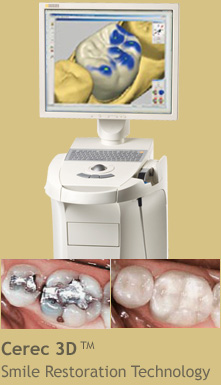Fillings
Fillings are commonly used in restorations involving cavities or decayed teeth. There are two types, Amalgam, which is more familiarly known as the silver colored filling, and white fillings.
Amalgam (Silver color) fillings
Silver amalgam has been used as restorative material for decades and has proven to be very strong. It is most commonly used for restorations in back teeth so as not to be as visible. Some disadvantages to be aware of are that amalgam fillings expand and contract with heat and the cold, and this can eventually cause the fillings to fracture your tooth. Since the material itself is strong, it puts pressure on your teeth which may fracture overtime. When used, part of your healthy teeth may need to be removed so the amalgam can be placed. And also, silver fillings are less attractive than tooth-colored composite resin fillings.
Call our office if your bite feels uneven, you have sensitivity or discomfort that increases or continues beyond three or four days, or if you have any questions or concerns.
White fillings
White fillings are composed of composite resin which can be bonded directly to the healthy part of your teeth, restoring it to near its original strength and function. It can be custom-colored to precisely match your teeth, so when composite resin fillings are placed, they’re extremely natural looking. This can really make a difference in your appearance, especially if the restoration is visible when you smile.
The other advantages of white fillings are that when we restore your tooth with composites resin, we need to remove only the decayed portion of your tooth because the bond anchors the material tightly in place and allow you to retain healthier tooth structure. And when white fillings are bonded to your tooth, they add strength to the tooth.
If you are looking for an attractive and effective option for restoring decayed teeth, be sure to ask us about the latest choices in white restorative materials.




